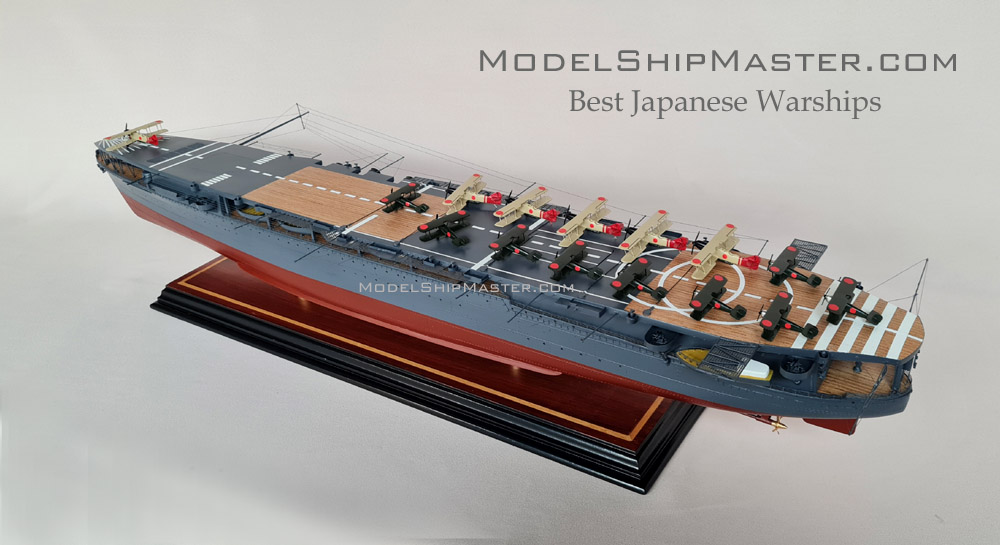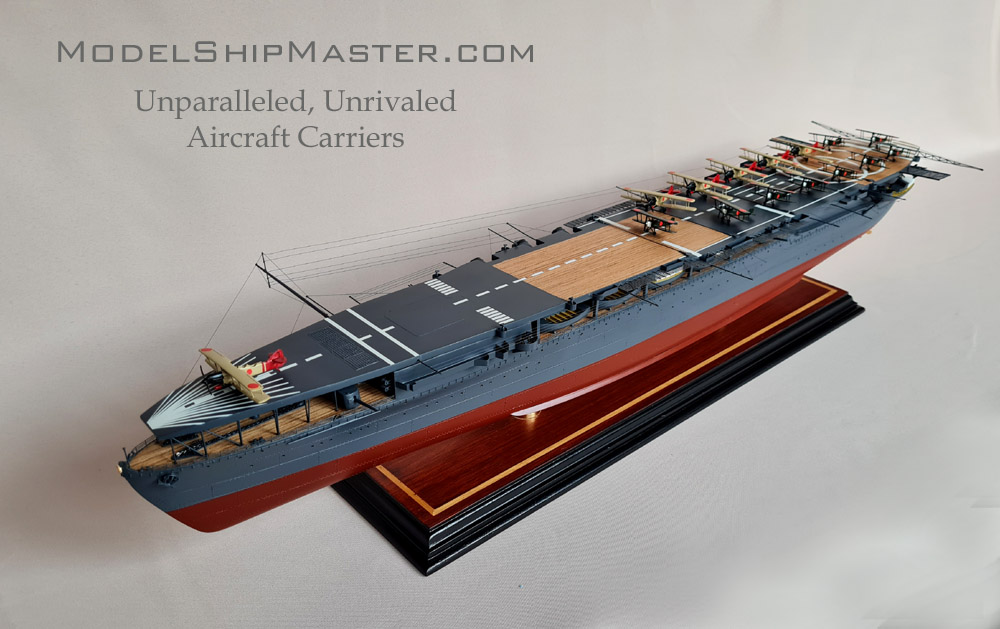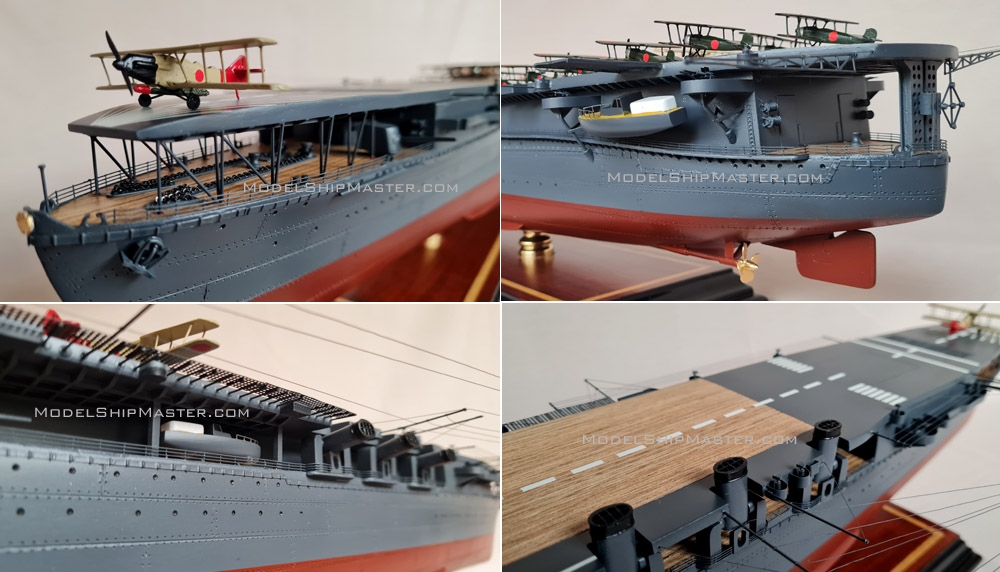|
HOSHO AIRCRAFT CARRIER
Hosho
(phoenix flying) was the world's first commissioned
ship that was built as an aircraft
carrier. Commissioned in 1922, the ship was used for
testing carrier aircraft operations equipment,
techniques, such as take-offs and landings, and
carrier aircraft operational methods and tactics.

Hosho was
initially designed as a seaplane carrier. The plan was
revised after reports were received from Japanese
observers with the Royal Navy in Europe about the
desirability to be able to land aircraft on the ship.
The ship was fitted with a forward flight deck, island and
funnels amidships, and a large hangar aft. Shortly
thereafter based on observations of landing trials on
and HMS Argus, Hosho's
flight deck design was revised in April 1919. The island
was removed and the funnels were moved to one side and
swiveled to lie horizontal during flight operations. Hosho's speed was 25 knots.
Hosho's
fundamental design would be used for
other Japanese carriers including the Akagi,
Kaga and Ryūjō. Unlike those ships,
which were all sunk during the Second World War, Hosho survived the
war. She participated in the attack on Pearl Harbor and
at the Battle of Midway.

The Hosho
aircraft carrier had
a normal capacity of fifteen aircraft. She was first
commissioned with an air group of nine Mitsubishi
1MF (Type 10) fighters and three to six Mitsubishi B1M3
(Type 13) torpedo bombers. In 1928, the fighters were
replaced by the A1N1 (Type 3). Three years later the air
group consisted of Nakajima A2N (Type 90) fighters
and Mitsubishi B2M (Type 89) torpedo bombers. In
1938 Nakajima A4N (Type 95) fighters and Yokosuka
B3Y (Type 92) bombers flew from the ship. In 1940 the
air group was modernized with Mitsubishi A5M (Type 96)
"Claude" fighters and Yokosuka B4Y1 (Type 96) "Jean"
bombers.
During the
Sino-Japanese War, Hosho rejoined the Third Fleet and
supported land operations of the army in Central China
in August 1937 with Ryūjō, later joined by Kaga.
The three carriers carried a total of 90 aircraft to the
conflict in China.

Ater the
Battle of Midway in June 1942, Hosho carrier resumed her
training role in Japanese home waters for the duration
of the conflict and survived the war with only minor
damage from air attacks.
After the war, Hosho
served as a repatriation transport to retrieve Japanese
servicemen and civilians stationed overseas and return
them to Japan. In total, the carrier made nine
repatriation trips and transported about 40,000
passengers. Hōshō was scrapped in Osaka in 1946.

This primarily wood Hosho aircraft
carrier model is 33" long x 10.5" wide x 7" tall (1/200
scale). It carries nine Mitsubishi 1MF (Type 10)
fighters and six Mitsubishi B1M3 (Type 13)
torpedo bombers as when the real ship was commissioned.
$3,570  Shipping
and insurance in the USA included. Other countries $300
flat rate. This model is scheduled to be completed soon. Shipping
and insurance in the USA included. Other countries $300
flat rate. This model is scheduled to be completed soon.
We also build this ship at
1/144 and 1/350 scales. Email us for quotes.
Learn more about the
Hosho here:
Hosho aircraft carrier.
|